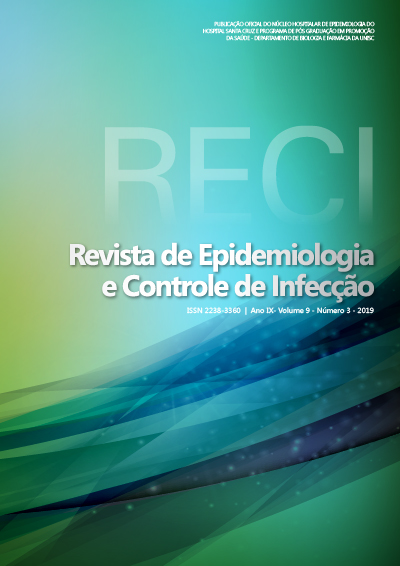Análisis temporal de los casos de coinfección Tuberculosis-VIH en la población de un estado del nordeste de Brasil
DOI:
https://doi.org/10.17058/reci.v9i3.13108Palabras clave:
Epidemiología. VIH. Tuberculosis.Resumen
Justificación y Objetivos: La coinfección tuberculosis-VIH (TB/VIH) ha sido una causa importante de muerte y de atención médica-hospitalaria-ambulatoria en servicios de salud por todo el mundo. Por lo tanto, el objetivo de este estudio fue evaluar el comportamiento de la coinfección TB/VIH en el estado de Alagoas (Brasil). Métodos: Se trata de un estudio ecológico de series de tiempo en que analizó los indicadores de coinfección TB/VIH en el periodo de 2001 a 2016. El área de estudio fue el estado de Alagoas, Brasil, y sus divisiones administrativas de referencia para el sector de la salud. El análisis de la evolución temporal utilizó la variación porcentual y la prueba de Mann-Kendall. Resultados: En el período comprendido entre 2001 y 2016, se notificaron 996 nuevos casos de coinfección TB/VIH en el estado de Alagoas, lo que corresponde al 5,6% del total de casos de TB. El porcentaje de coinfección TB-VIH aumentó de 1,4% en 2001 a 14,6% en 2016, con una variación y una tendencia positiva del 1180% (p<0,05). La incidencia de coinfección TB/VIH en el mismo período aumentó de 0,6% en 2001 a 2,0% en 2016, con una tendencia positiva y una variación del 290% (p<0,05). Conclusión: Las series temporales de la proporción e incidencia de coinfección TB/VIH revelan un aumento significativo en el estado de Alagoas desde 2001 hasta 2016, lo que destaca la influencia del VIH como factor para la ocurrencia de TB en la población.Descargas
##submission.downloads##
Publicado
Cómo citar
Número
Sección
Licencia
The author must state that the paper is original (has not been published previously), not infringing any copyright or other ownership right involving third parties. Once the paper is submitted, the Journal reserves the right to make normative changes, such as spelling and grammar, in order to maintain the language standard, but respecting the author’s style. The published papers become ownership of RECI, considering that all the opinions expressed by the authors are their responsibility. Because we are an open access journal, we allow free use of articles in educational and scientific applications provided the source is cited under the Creative Commons CC-BY license.


